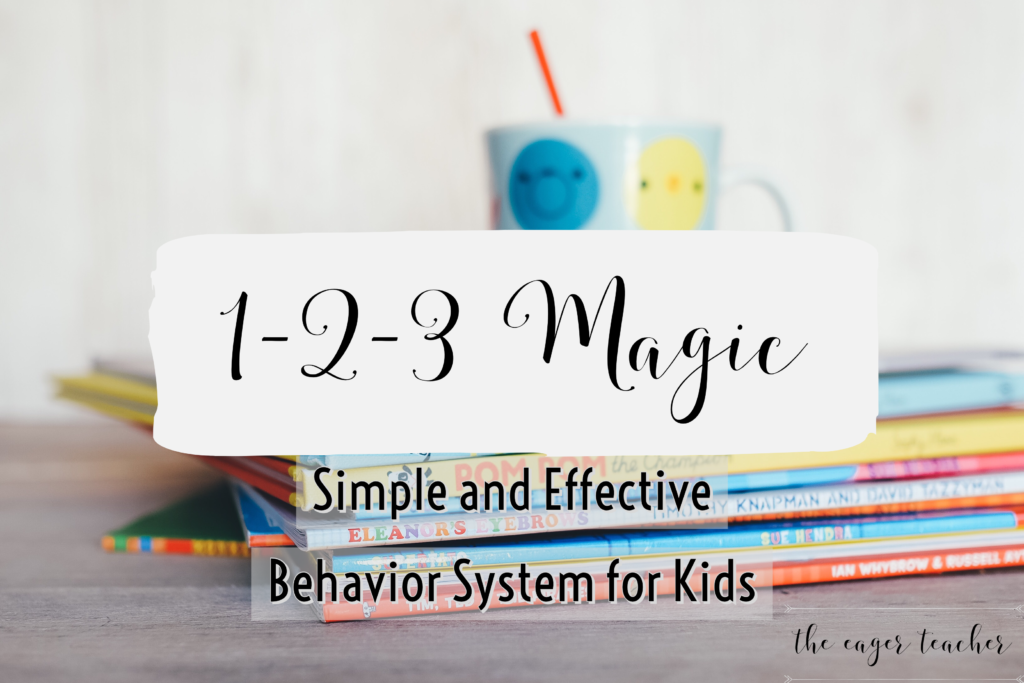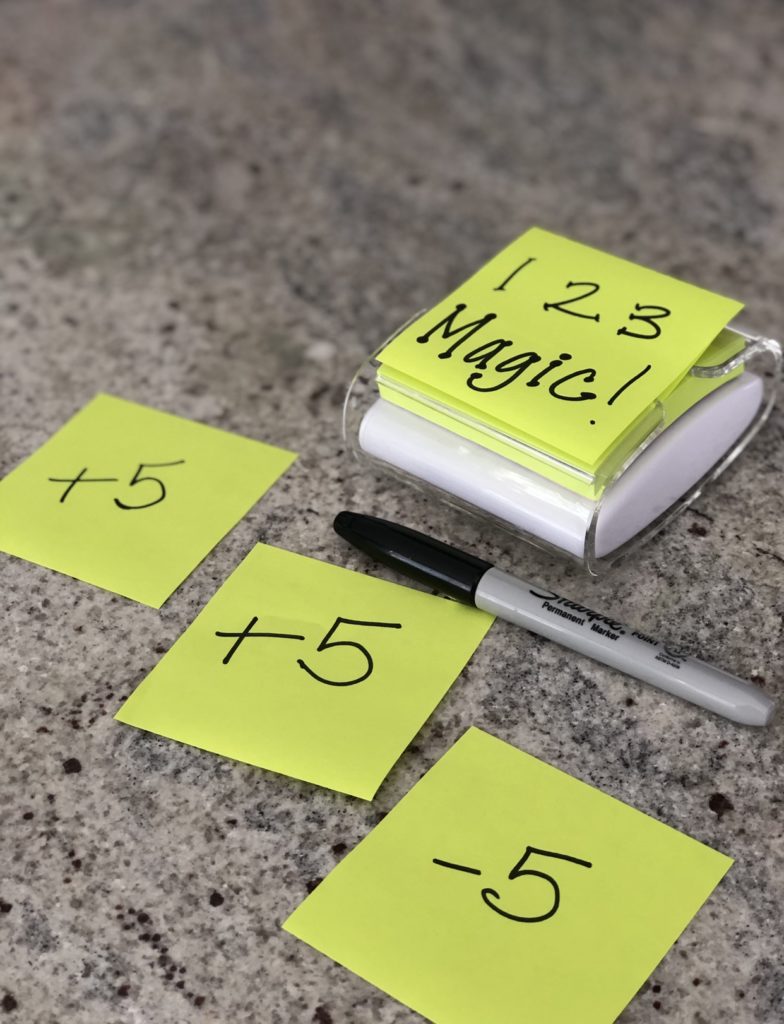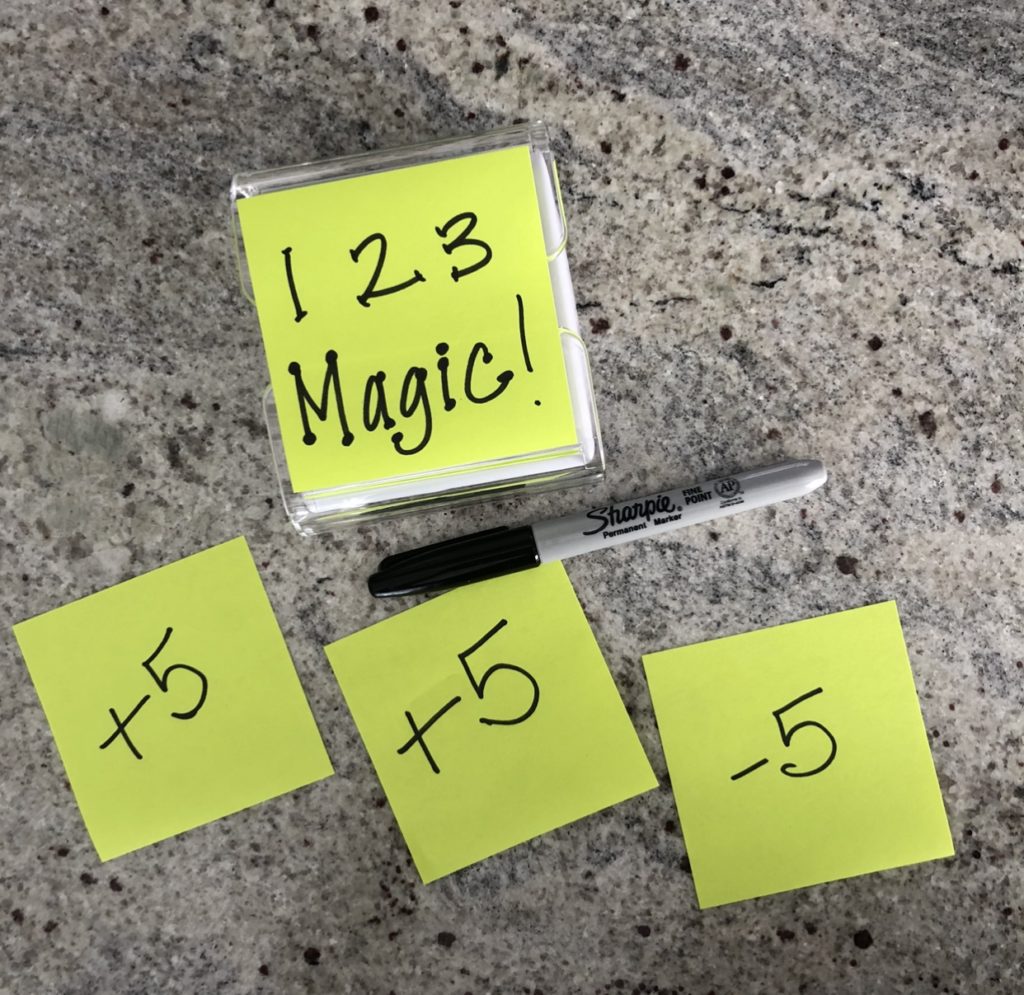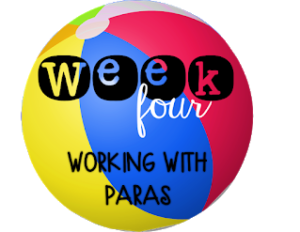
It’s no surprise that some of my best parenting tricks come from my years spent teaching kindergarten. I used to joke with the teacher aides in my classroom that my future children didn’t stand a chance. I can wait out any tantrum, I can maneuver any power struggle, and I can keep my cool during some pretty horrendous meltdowns. All of this to say, having a background in education and behavior management does NOT mean my kids are perfect and that we don’t have our fair share of behavior struggles on the regular.
The best strategy that I ever learned as a teacher was recommended to me after I had been observed during my first year teaching. My mentor was observing me, and after the observation she pointed out that I was over explaining myself to the kids when they were not following directions. How could this be possible? I was trying to explain to the kids WHY they should behave and WHY what they were doing was inappropriate, disruptive or distracting. What she pointed out to me was that by over explaining myself to a classroom full of five year olds, I was actually giving them quite a bit of power over me. She said- “You need to use 1-2-3 magic.”
I was forever changed as a teacher and it has been my saving grace as a mama.
What is 1-2-3 Magic?
1-2-3 Magic is a bestselling parenting book by Dr. Thomas W. Phelan. The concept is very simple and that’s what makes it easy and effective!

Here’s how I use 1-2-3 Magic in our home and how you can get started with your child. I recommend this for kids ages 2 and up. I started doing it with fidelity around 2 1/2 and it worked wonders.

Introducing the Concept to Your Child
Depending on the age of your child, you can tell them you are going to be doing something different from now on when they are not listening. I’ll give you an example script of how I would explain our method to my child if it were just being introduced.”
“I love when you do the right thing. It makes me very happy. From now on we are going to have a new system in our house called 1-2-3 Magic. You will get 3 chances to do the right thing and if you don’t, you will lose a privilege. The privilege you will lose is bedtime. If I get to “3”, you will lose 5 minutes and have to go to bed early.”
Then, I would just start doing it and let them learn the rules as they go. It won’t take long for them to understand how it works.
Here’s How It Works
When your child is doing something undesirable, such as not listening, not following directions, whining, begging, crying, having a tantrum, you name it, you say “That’s 1.” You don’t yell, you don’t show any irritation in your voice, you just simply and calmly state “That’s 1.” If your child knows what he/she is doing wrong, “That’s 1” is all you need to say. If they don’t know what they are doing wrong, you can say “Please stop whining about the toy. That’s 1.” or “That’s 1 for not putting away the books.” Again, you DO NOT raise your voice or show any irritation in your voice. You just calmly state what you want them to stop doing (or start doing) and tell them “That’s 1.”
Wait Time
Then, you wait. When I first started, I gave a full minute of wait time after saying “That’s 1.” You have to give kids time to decide whether they are going to be stubborn and continue, or whether they are going to do the right thing. The important part of wait time is to NOT SAY ANYTHING. Don’t say “You already got 1, and you’re going to get 2 if you don’t clean up, and if you don’t clean up you won’t get to play with this toy tomorrow. And now we’re going to be late. Can you clean up? Can you be a good boy and clean up like mommy asked you so I don’t get to 2?” NO! Do not speak. Just let them sit with the decision because guess what?! They heard you the first time and nothing you say between “That’s 1” and “That’s 2” will really convince them to do something they don’t want to do. Let it sit with them until they decide. If they have not done the desired behavior (or stopped the undesired behavior) after a minute, then you calmly say “That’s 2.” Then you wait ANOTHER MINUTE. You do not talk, negotiate, roll your eyes, explain or threaten. Just wait.
If your child doesn’t follow through after a minute, you say “That’s 3. Now you lose a privilege.” They will cry. They will get mad. They will not believe you, or they will beg you to change your mind. As they get more used to the system, you may find that you rarely get to 3. We’ve been using 1-2-3 Magic in our house for almost 2 years and rarely get to 3. We can usually nip stuff in the bud at “That’s 1”.
Your wait time will and should decrease as your child gets used to it. At this point, I give about 10 seconds.
Privileges and Consequences
Decide ahead of time what will ALWAYS be your privilege to take away or the consequence. In our house, the privilege/consequence is earning +5 extra minutes at bedtime (staying up late), or losing -5 minutes at bedtime (going to bed early). I keep track of it by sticking a post it note with either a +5 or a -5 on the fridge. At the end of the day, we look and see what bedtime will be. The nice thing about this is if your kids are young, they don’t really know that 5 minutes isn’t that big of a deal. A 10 year old won’t be thrilled to stay up 5 minutes late, but a 3 or 4 year old will. I am a firm believer that consequences work best when they are the same. If some days you take away iPad and other days you take away toys and other days you take away dessert and other days they go to bed early, then your child will weigh all of these consequences differently and will not be consistent in how they interpret 1-2-3 Magic. For example, if it’s a Monday and they watched a lot of iPad on Sunday, they may not care if you take away iPad. Or if they know there are no good treats in the house and you take away dessert, they may not really care.
Keeping Track
When my kids earn +5 or lose -5 I write it on a post-it note and stick it on the fridge. It is simple and works well for us. You could incorporate a sticker chart or something like that if you feel it is necessary, but I have never needed to do anything more than a post-it to remind them (and myself) what is owed or lost at the end of the day.

Using Minutes/Time
One of the reasons I like having bedtime be our privilege/consequence is because it’s easy to add on to it or deduct from it. Some days you might earn +15 minutes because you were caught being good 3 separate times. Other days you might be going to bed -20 minutes early because I got to 3 on four different occasions and now you owe a lot of time. If your consequence is one thing that gets taken away (like dessert), you will not be able to use 1-2-3 Magic all day because once it’s gone, it’s gone. TIME is a great, flexible privilege. Even if it’s not bedtime, it could be book time at night, TV time, iPad time, arts and crafts time, outside time, bath time, video game time, whatever your child loves doing or whatever is very special to him/her.
Time Out
I get asked a lot if I use time out and the answer is yes, but only for really egregious behaviors like biting, hitting or being completely disrespectful to someone. I try to reserve time out for those situations so there is a clear difference between not following directions or not listening (typical child behavior) and being physically aggressive or disrespectful (always unacceptable).
Give It Time and Fidelity
My suggestion if you are trying 1-2-3 Magic or any behavior management system, that you give it time if it doesn’t work right away. Two things are likely to happen when you start a new system or set new boundaries with kids. The first thing that is likely to happen is a honeymoon period. Your kids might respond really well right away, but then in 2-3 days they might fight back. Don’t quit then and assume it isn’t working. Kids will test boundaries and will push back when you start something new. The other thing that might happen is they might fight back right away with no honeymoon. It might take a week or more for them to really understand the system and understand that it’s not going away. You have to follow through and be consistent or it will not work. If you only loosely follow a system, your kids will quickly learn that you only mean business *sometimes*. One of the nice things about 1-2-3 Magic is it is easy for everyone to follow- so that means all parents, grandparents, babysitters, daycare, etc. can use the common language of “That’s 1, That’s 2, That’s 3.”





